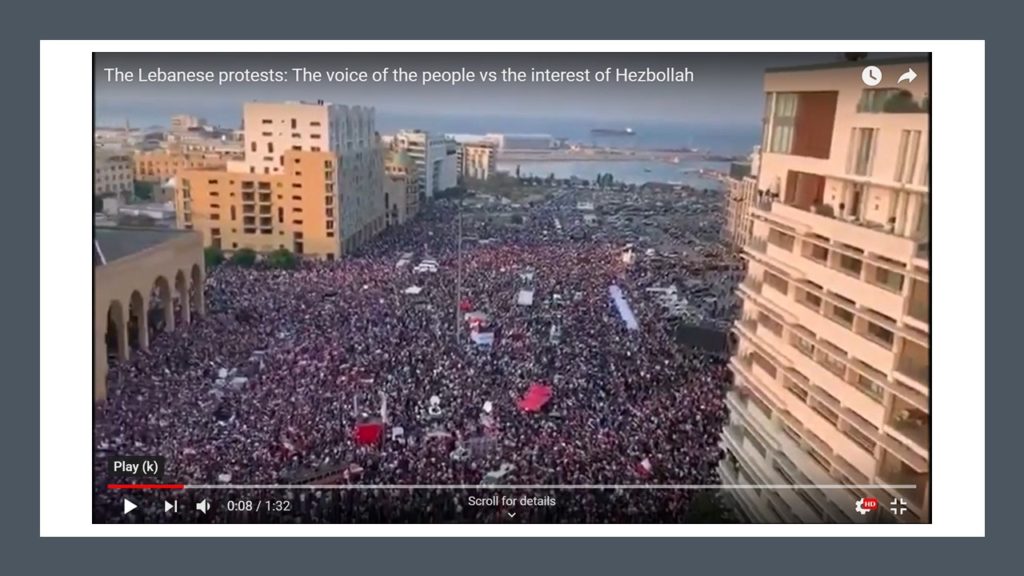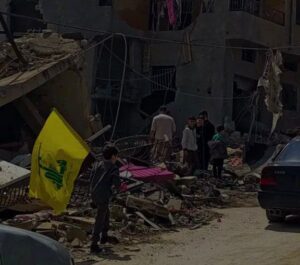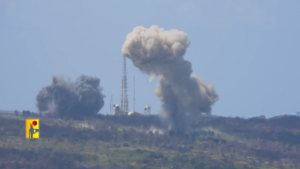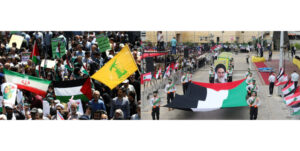[vc_row][vc_column][vc_column_text]The Lebanese protest beginning on October 17 2019, is still at large. Demonstrations in Lebanon continue, however at a lower intensity.
Most of the grievances are the result of the economic situation in Lebanon and the corruption in the country. The blame is mainly directed at the government, governing institutions, the economic system and publicly at Hezbollah (not an obvious occurrence in Lebanon …).
In the major cities, with an emphasis on the capital Beirut and the northern city of Tripoli, daily large gatherings of festive character take place. From time to time, protesters throughout Lebanon tried to erect roadblocks, but the Lebanese army usually managed to overcome them in a relatively moderate way unblocking the road. Nevertheless, in a number of individual incidents, the army was compelled to open fire thus causing deaths amongst the demonstrators (so far counting three fatalities: two in Tripoli and one in Beirut).
After Lebanese Prime Minister Saad Al-Hariri’s resignation, protesters supported his proposal to form a technocratic government and the prediction being that Al-Hariri will also head the new government.
Hezbollah continues its many efforts to preserve the peace, especially among the Shi’ite population in general and among its own people in particular, declaring that they are in favor of the demonstrations but are against causing harm to the day-to-day routine of life, emphasizing the blocking of roads impairing citizens’ ability to get to work harming their livelihood.
However, simultaneous to the “moderate” declarations, Hezbollah continues to send its bullies violently dispersing demonstrations, mainly to preserve their deterrence. As part of the propaganda effort and the attempt to influence public opinion, Speakers on behalf of Hezbollah, headed by Hassan Nasrallah, claimed that the organizers and funders of the protests were “foreign entities”, intervening in Lebanon’s internal affairs, making clear allegations to the United States and Israel (statements made also by Iran’s supreme leader – Khamenei, thus backing his proxy in Lebanon). As part of the protests, several acts of hatred against the United States and Israel were identified, such as the burning and stepping on the United States and Israeli flags.
Please note that Hezbollah keeps the peace among its own people also through financial means, this is indicated by the fact that they began to reward their people in dollars since the immense devaluation of the Lebanese pound following the protests.
Hezbollah and its followers strongly oppose the establishment of a technocratic government as proposed by Alhairi. In their understanding, Alhairi’s proposal for a technocratic government is in line with the US demand to re-establish power and to undermine the results of the parliamentary elections.
From Hezbollah’s point-of-view, it is a political struggle, which compares with the struggle against the US sanctions. They claim that since it is a political crisis and struggle, it is imperative that a political government, rather than a technocratic one must run it.
Notwithstanding the foregoing, the Hezbollah camp supports Saad Alhairi continuing as Prime Minister, in light of Lebanon’s dismal economic situation.
As of now, everyone is awaiting Alhairi’s decision: Will he insist on the establishment of a technocrat’s government, thus pacifying the protesters but confronting Hezbollah, or, vice versa, appeasing the Hezbollah camp but antagonizing the protesters… do not be surprised if ultimately the will of Hezbollah’s will triumph.
Political, social and economic challenging times lie ahead for the state of Lebanon…[/vc_column_text][/vc_column][/vc_row][vc_row][vc_column][vc_video link=”https://www.youtube.com/watch?v=XG2vhIjRQfM&feature=youtu.be”][/vc_column][/vc_row]






